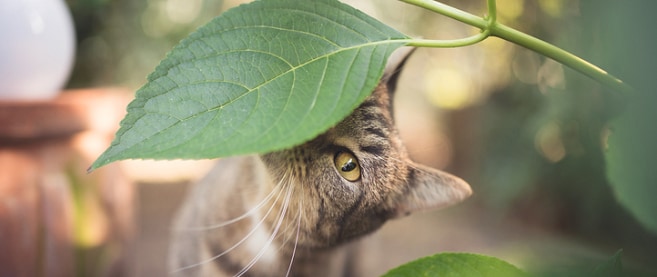You walk into a room and find your cat rolling and twisting on the floor, oblivious to whatever is going on around them. You know right away that your cat has been into the catnip.
Looking for a cat sitter? Find one in your area now.
What is catnip?
Catnip is a herb that belongs to the mint family. It’s believed that the oil in its leaves and stem mimics a feline pheromone; this is what causes instant arousal and excitation in cats who smell it. Both males and females respond to the effects of catnip, but this usually doesn’t happen until they are around a year old. That being said, some felines never experience the effects.
Cats don’t need a lot of the plant to be present to feel its euphoric effect: as little as one part per billion in the air can have an impact. Cats can therefore chew it, rub on it or even just inhale it.
Does it have any benefits?
Cats that are responsive to catnip really seem to enjoy themselves. It therefore works really well as positive reinforcement if you want to groom them or enact some type of training. For instance, you can use it as a reward for allowing brushing or nail trimming, or as a way to attract a cat to a scratching post or litter box.
Additionally, catnip is a great resource for curbing health and behaviour issues. In lazy or overweight cats, exposure to the herb will encourage them to run around, play and exercise more instead of lying around and being sedentary. Further to this, catnip can be a useful tool for cats who are stressed out, as it can help alleviate stress for felines when they’re moving to a new location or when another cat is added to the family.
Is it safe?
Catnip is generally safe for most cats, but you should also watch how your pet reacts specifically. Occasionally, the excitation can lead some cats to act aggressively. However, it’s important to remember that as with anything, moderation is key: it can’t be healthy for a cat to be high all of the time. Judge your cat’s demeanour and body language to determine when enough is enough.
You can grow the herb yourself. It is relatively easy to cultivate in your own garden and can be offered to your cat without any additions. If you do decide to buy instead, look for a product that’s free of pesticides.
* This article is for general informational purposes only. It is not intended nor implied to be providing medical advice and is not a substitute for such advice. The reader should always consult a veterinarian concerning any medical condition or treatment plan. Neither Care.com nor the author assumes any responsibility or liability with respect to use of any information contained herein.
Read Next: 6 Ways Cats Make Great Pets
Read Next: How Pet Sitters Can Build a Bond
Read Next: 10 Ways to Keep Your Pet Safe in the Cold

